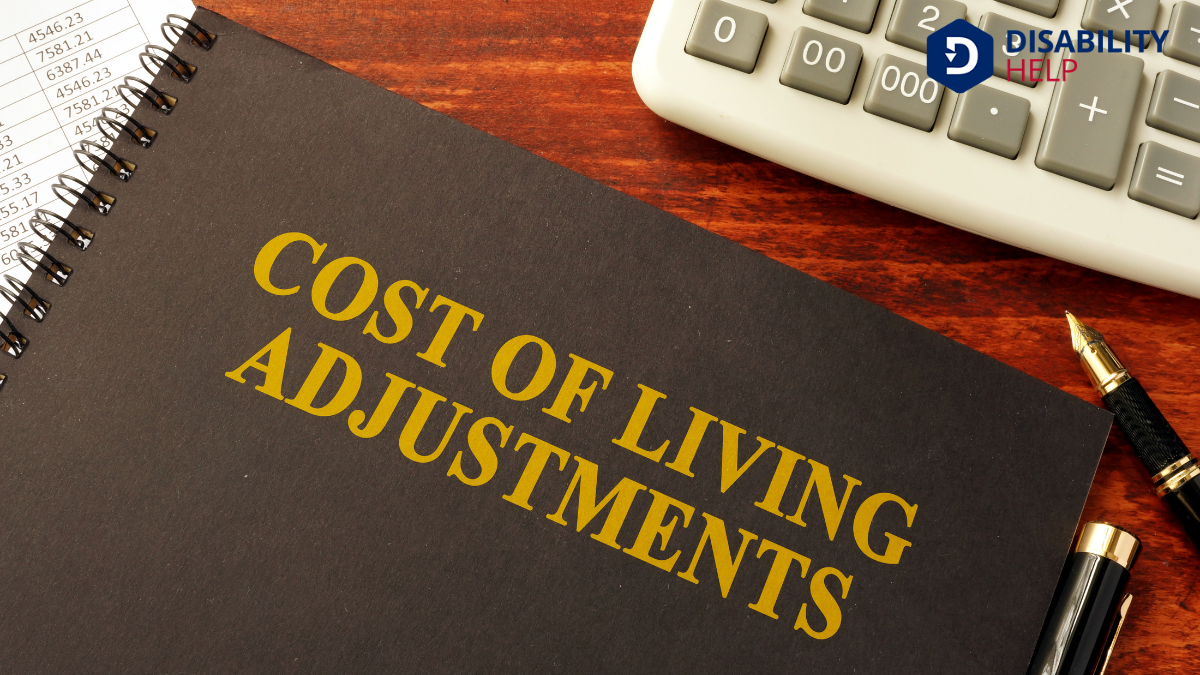When we’re trying to figure out how much disability we’ll receive, it’s essential to start by understanding the types of benefits available, such as SSDI and SSI. Considering our work history and earnings, as well as the severity of our disability, helps shape the outcome. Let’s explore how state-specific variations and additional income sources might affect our benefits. And don’t forget about those cost-of-living adjustments that could impact our payments over time.
Key Takeaways
- Use the Average Indexed Monthly Earnings (AIME) to determine your potential Social Security Disability Insurance (SSDI)A U.S. government program that provides financial assistance to individuals who are unable to work d... benefits.
- Calculate your Primary Insurance Amount (PIA) using the SSA's benefit formula with AIME and current bend points.
- Check your work history and credits to ensure SSDI eligibility, requiring at least 20 credits in the past decade.
- Consider state-specific rules and cost-of-living adjustments (COLA) that may impact benefit calculations and payments.
- Eligibility for Supplemental Security Income (SSI) depends on financial need, not work history or contributions.
Understanding the Types of Disability Benefits
When steering through the world of disability benefitsFinancial assistance provided to individuals who are unable to work due to a disability, such as Soc..., it’s crucial to understand the different types available to us.
We primarily encounter two key programs: Social Security Disability InsuranceA form of insurance that provides income to individuals who are unable to work due to a disability. (SSDI) and Supplemental Security Income (SSI). SSDI benefits those who've paid into Social Security through work, while SSI targets individuals with limited income and resources, irrespective of work history. Knowing the distinction helps us determine which program aligns with our needs.
Each program has its own eligibility criteria, affecting how we approach our applications.
SSDI considers our contributions and disability status, while SSI focuses on financial need. Being clear on these differences guarantees we're on the right path for support.
Understanding these benefits empowers us, guiding us towards the assistance we rightfully deserve.
Evaluating Your Work History and Earnings

How exactly do our work history and earnings impact our eligibility for disability benefits? They play a vital role in determining the benefits we might receive.
Social Security Disability Insurance (SSDI) requires us to have earned enough work credits, which we accumulate by paying Social Security taxes over the years. Typically, we earn one credit for each $1,640 of wages, up to four credits annually.
The number of credits needed depends on our age when we become disabled, but generally, we need at least 20 credits earned in the last ten years. Our average lifetime earnings also influence the amount we receive.
Reviewing our Social Security Statement can provide us with a clearer picture of how our work history stacks up for eligibility.
Assessing the Severity of Your Disability
Understanding how to assess the severity of our disability is essential to determining our eligibility for benefits. We need to be familiar with the criteria that agencies use to evaluate our condition. This guarantees we accurately present our situation and receive the support we need.
The severity of our disability is often measured by how it affects our daily activities and ability to work. Here’s how we can approach this:
- Document Symptoms: Record how our disability impacts daily tasks and any limitations we experience.
- Seek Medical Opinions: Obtain thorough evaluations from healthcare professionals to support our claims.
- Understand Disability Listings: Familiarize ourselves with official disability listings to see if our condition matches any listed criteria.
Exploring State-Specific Benefit Variations
As we explore state-specific benefit variations, it's important to understand how each state calculates benefits differently.
We'll also consider how the regional cost of living impacts benefit amounts and examine the unique aspects of local disability programs.
Together, this knowledge helps us navigate the diverse landscape of disability benefits across states.
State Benefit Calculation Methods
While traversing the complex landscape of disability benefits, it's vital to recognize that each state employs unique methods for calculating these benefits. We must understand these variations to navigate our personal situations effectively.
Some states might base their calculations on your previous earnings, while others may consider the severity of the disability and the anticipated duration of the condition. It’s significant to familiarize ourselves with our state’s specific approach to guarantee we receive the correct amount.
Consider these key points:
- Earnings-Based Calculations: Some states rely on your average wages over a specific period.
- Severity and Duration: Others assess benefits based on how disabling and long-lasting the condition is.
- State-Specific Rules: Every state has its own rules, so thorough research is fundamental.
Understanding these methods empowers us to advocate for our rightful benefits.
Regional Cost of Living
When considering disability benefits, we must account for the regional cost of living, which varies greatly across states.
We all know that living in New York City is pricier than in rural Alabama. This disparity affects how far our benefits stretch. States with higher living costs often have adjusted benefits to help cover basic expenses like housing and food.
By understanding these regional differences, we can better estimate what our monthly disability check will provide. It’s essential to research the specific cost of living in our area to see how it impacts our benefits.
Let's make sure we’re informed about these variations so we can plan our financial future effectively and make the most of the benefits we receive.
Local Disability Program Differences
Understanding the local disability program differences is essential to maximizing our benefits. Each state in the U.S. has unique regulations and benefit structures for disability programs. Familiarizing ourselves with these variations can greatly impact the support we receive.
Some states offer additional benefits or have specific qualification criteria that may influence our application process and eventual benefits.
To navigate these differences effectively, we should consider:
- State-specific eligibility requirements: Each state may have unique conditions that influence our qualification for benefits.
- Supplemental state benefits: Some states provide extra financial assistance beyond federal programs, which can enhance our overall support.
- Application procedures: The process might vary, so understanding our state’s documentation and timelines is essential.
Calculating Your Average Indexed Monthly Earnings (AIME)

Calculating your Average Indexed Monthly Earnings (AIME) is an essential step in determining your Social Security disability benefits.
We must first gather your earnings history, focusing on the years you earned the most. The Social Security Administration (SSA) indexes your earnings to reflect changes in wage levels over time. This means they adjust past earnings to today’s standards, ensuring a fair comparison.
Next, we select the highest-earning years, depending on your age and work history. Generally, we use your top 35 years of earnings.
Then, we divide the total indexed earnings by the number of months in those years to find your AIME. This figure gives us a baseline to understand how the SSA calculates your benefits, providing a clearer picture of your potential disability income.
Estimating Your Primary Insurance Amount (PIA)
Let's now focus on estimating our Primary Insurance Amount (PIA), which is essential for understanding our potential disability benefits.
First, we'll use our Average Indexed Monthly Earnings (AIME) as the foundation for this calculation.
Then, we'll apply the Social Security Administration's benefit formula to determine our PIA.
Calculating Average Indexed Earnings
When planning for disability benefits, it’s vital to grasp how your Average Indexed Earnings (AIE) play a role in estimating your Primary Insurance Amount (PIA).
Understanding this calculation helps us anticipate the benefits we might receive. The Social Security Administration (SSA) uses our highest-earning years to determine our AIE, effectively adjusting for inflation. This guarantees that our earnings reflect today’s economic conditions.
To calculate our AIE, we need to:
- Identify the highest-earning years: Typically, these are the 35 years where we earned the most.
- Index these earnings: Adjust them to reflect current wage levels, considering inflation.
- Calculate the average: Sum the indexed earnings and divide by the number of years considered.
Mastering these steps is vital in estimating our disability benefits accurately.
Applying Benefit Formula
Understanding how to apply the benefit formula is essential for estimating our Primary Insurance Amount (PIA), which determines the monthly disability benefits we can expect.
First, we need to know our Average Indexed Monthly Earnings (AIME), calculated from our highest-earning years. The Social Security Administration applies a specific benefit formula to this AIME.
The formula involves three bend points, which change every year. We multiply portions of our AIME by different percentages at each bend point. The sum of these calculations gives us our PIA.
It’s vital to stay updated on the current year’s bend points since they directly impact our PIA. By accurately applying the formula, we gain a clearer understanding of our potential disability benefits, empowering us to plan effectively.
Considering Additional Income Sources
While determining disability benefits is essential, it's also wise to take into account additional income sources to guarantee financial stability.
We should explore opportunities that complement our benefits and support our lifestyle. By diversifying our income, we can achieve greater security and peace of mind.
Let's consider these potential income sources:
- Part-time work: Engaging in part-time or freelance work can provide extra earnings without overburdening us physically or mentally.
- Investment income: Dividends from stocks or interest from savings accounts can supplement our disability benefits.
- Rental income: If we own property, renting it out can be a steady income stream.
Applying Cost-of-Living Adjustments (COLA)

As we navigate the complexities of disability benefits, applying Cost-of-Living Adjustments (COLA) is vital to maintaining our purchasing power over time. COLA guarantees our benefits keep pace with inflation, safeguarding us against rising costs.
Each year, the Social Security Administration evaluates the Consumer Price Index (CPI) to determine if a COLA is necessary. When applied, it increases our disability benefits based on the rate of inflation, ensuring that our money holds its value.
Understanding how COLA affects our benefits helps us plan better. We should stay informed about annual announcements regarding COLA adjustments. By doing so, we can anticipate changes in our benefits and budget accordingly.
Conclusion
In summary, we've explored the key steps to determine how much disability you'll receive. By understanding the different types of disability benefits, evaluating your work history, and calculating AIME and PIA, you can estimate your benefits accurately. Don’t forget to take into account any additional income sources and stay informed about state-specific variations and COLA updates. Armed with this knowledge, you’re better prepared to navigate the process and guarantee you receive the support you need.






